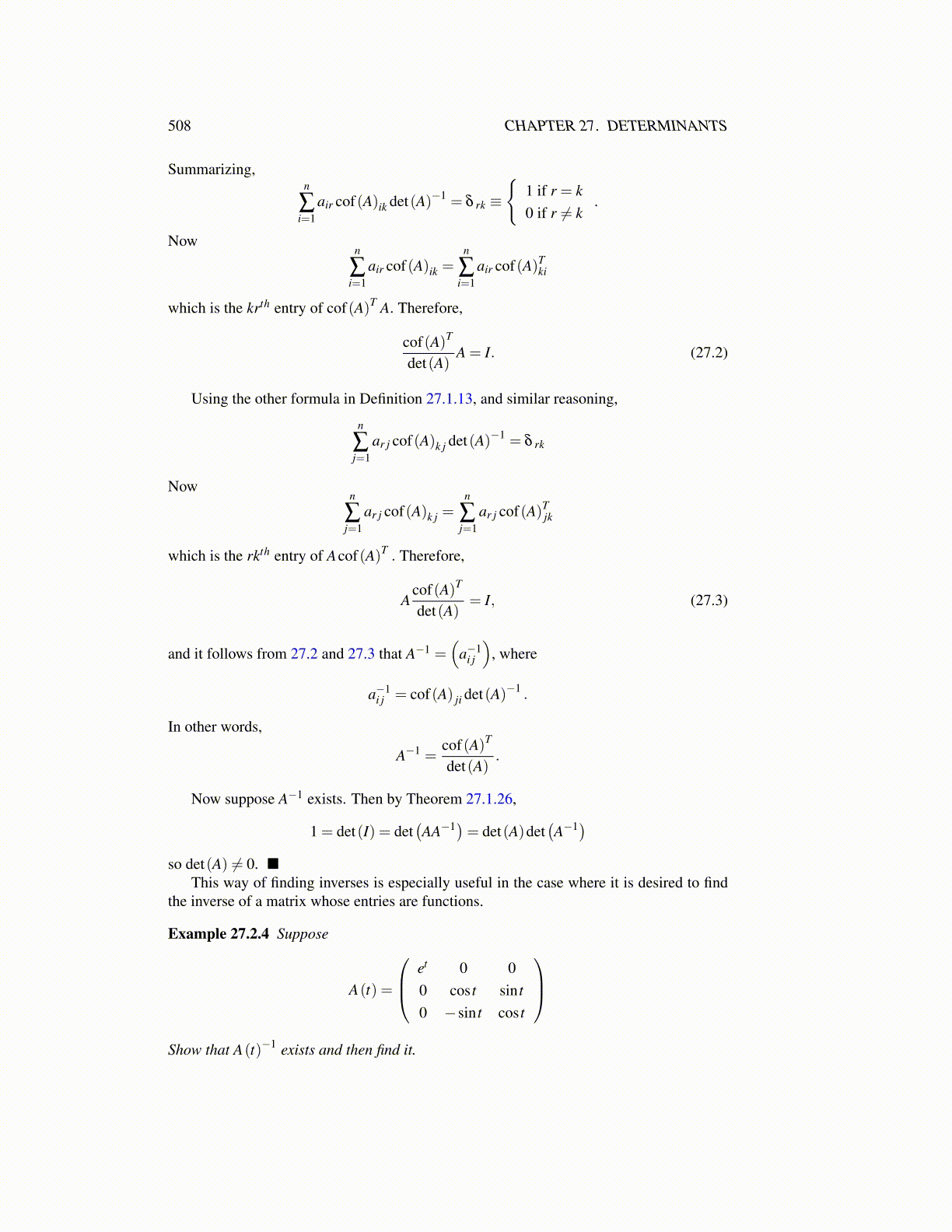
508 CHAPTER 27. DETERMINANTS
Summarizing,n
∑i=1
air cof(A)ik det(A)−1 = δ rk ≡
{1 if r = k0 if r ̸= k
.
Nown
∑i=1
air cof(A)ik =n
∑i=1
air cof(A)Tki
which is the krth entry of cof(A)T A. Therefore,
cof(A)T
det(A)A = I. (27.2)
Using the other formula in Definition 27.1.13, and similar reasoning,
n
∑j=1
ar j cof(A)k j det(A)−1 = δ rk
Nown
∑j=1
ar j cof(A)k j =n
∑j=1
ar j cof(A)Tjk
which is the rkth entry of Acof(A)T . Therefore,
Acof(A)T
det(A)= I, (27.3)
and it follows from 27.2 and 27.3 that A−1 =(
a−1i j
), where
a−1i j = cof(A) ji det(A)−1 .
In other words,
A−1 =cof(A)T
det(A).
Now suppose A−1 exists. Then by Theorem 27.1.26,
1 = det(I) = det(AA−1)= det(A)det
(A−1)
so det(A) ̸= 0. ■This way of finding inverses is especially useful in the case where it is desired to find
the inverse of a matrix whose entries are functions.
Example 27.2.4 Suppose
A(t) =
et 0 00 cos t sin t0 −sin t cos t
Show that A(t)−1 exists and then find it.